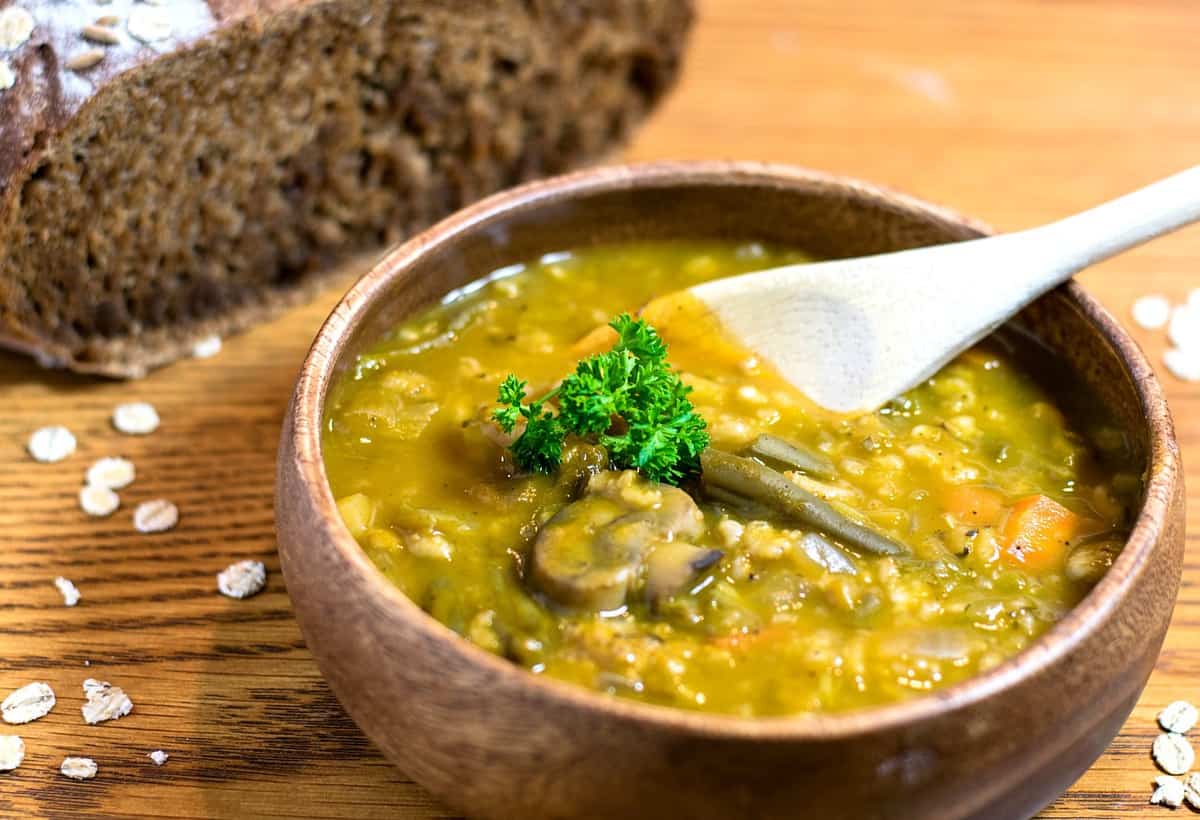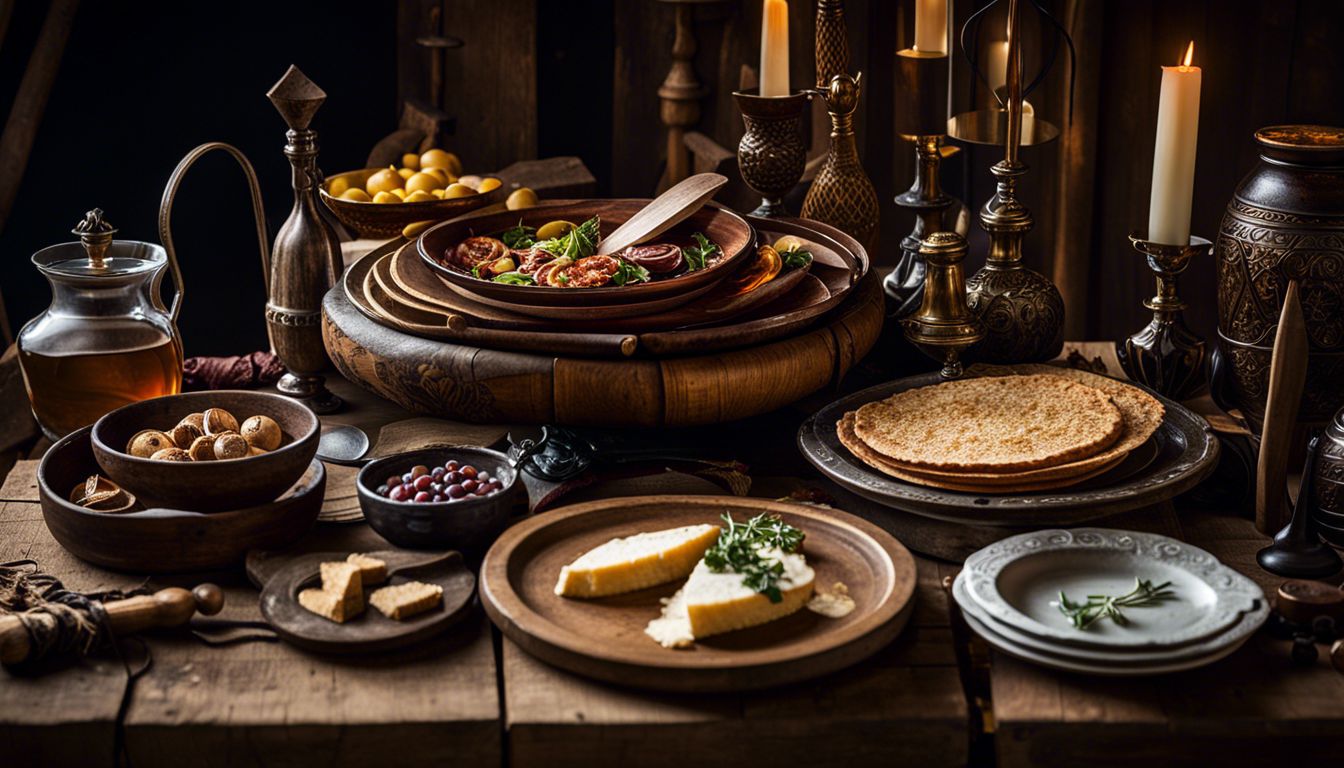Medieval food recipes offer a fascinating glimpse into the culinary traditions and cultural practices of a bygone era. From elaborate feasts to humble everyday meals, the medieval diet was as diverse and flavorful as the society that produced it.
This comprehensive guide delves into the types of food consumed in medieval times, the cooking techniques and equipment used, and the elaborate dining customs of medieval feasts. We will also explore the methods used to preserve food in medieval times and trace the evolution of medieval recipes to their influence on contemporary cooking.
Introduction

Medieval food refers to the culinary practices and cuisine of Europe during the Middle Ages, a period spanning from the fall of the Western Roman Empire in the 5th century to the beginning of the Renaissance in the 15th century.
It is characterized by its use of local ingredients, simple cooking techniques, and the preservation of food through methods like salting, smoking, and pickling.
The significance of medieval food lies in its reflection of the social, economic, and cultural aspects of the time. It provides insights into the dietary habits, eating customs, and culinary innovations of medieval society. Moreover, it showcases the influence of various cultures and regions on medieval cuisine, as well as the ingenuity of people in adapting to the challenges of food production and preservation.
Sources of Medieval Recipes
Medieval recipes have been preserved in various sources, including cookbooks, household manuals, medical texts, and monastic records. These sources provide valuable information about the ingredients, cooking methods, and culinary practices of the time. Notable examples include the “Forme of Cury,” a 14th-century English cookbook, and the “Liber de Coquina,” a 13th-century Italian cookbook.
Types of Medieval Food
The medieval period was a time of great culinary diversity, with different regions and social classes consuming a wide range of foods. While the availability of certain ingredients and dishes varied depending on factors such as geography, climate, and economic status, some common types of food consumed during this period included:
Bread and Grains
Bread was a staple food for all levels of society, and was typically made from wheat, rye, or barley. It was often eaten with cheese, butter, or other simple accompaniments. Other grain-based dishes included porridge, gruel, and pasta.
Meat
Meat was a luxury item for most people, and was typically reserved for special occasions or for the wealthy. The most common types of meat consumed were beef, pork, and mutton. Poultry, such as chicken and goose, was also eaten, as were game animals like deer and rabbit.
Fish
Fish was an important source of protein for people living near bodies of water. Freshwater fish, such as salmon, trout, and carp, were commonly eaten, as were saltwater fish like cod, herring, and mackerel.
Vegetables
Vegetables were an important part of the medieval diet, and were typically grown in gardens or foraged from the wild. Common vegetables included cabbage, carrots, turnips, onions, and leeks. Fruits were also eaten, but were less common than vegetables.
Dairy Products
Dairy products were an important source of protein and fat for medieval people. Milk, cheese, and butter were all commonly consumed. Cheese was often used as a way to preserve milk, and was a popular ingredient in many dishes.
| Food Type | Examples | Preparation Methods | Common Ingredients |
|---|---|---|---|
| Bread and Grains | Bread, porridge, gruel, pasta | Baked, boiled, fried | Wheat, rye, barley |
| Meat | Beef, pork, mutton, poultry, game | Roasted, boiled, stewed, fried | Meat, salt, herbs, spices |
| Fish | Salmon, trout, carp, cod, herring, mackerel | Baked, boiled, fried, smoked | Fish, salt, herbs, spices |
| Vegetables | Cabbage, carrots, turnips, onions, leeks | Boiled, roasted, fried, stewed | Vegetables, salt, herbs, spices |
| Dairy Products | Milk, cheese, butter | Raw, boiled, churned | Milk, salt, rennet |
Medieval Cooking Techniques
In medieval kitchens, cooking methods were dictated by the availability of ingredients, cooking equipment, and fuel. Despite the limitations, medieval cooks employed a range of techniques to create flavorful and nourishing dishes.
Cooking Methods
The primary cooking methods used in medieval times included:
- Roasting: Meat and poultry were roasted over an open fire on a spit or in a roasting pan.
- Boiling: Food was cooked in large pots or cauldrons filled with water or broth.
- Stewing: Meat, vegetables, and herbs were simmered together in a covered pot.
- Baking: Bread, pastries, and pies were baked in wood-fired ovens.
- Frying: Food was cooked in hot oil or fat in a frying pan.
Each method offered distinct advantages. Roasting imparted a smoky flavor to meat, while boiling preserved nutrients and created flavorful broths. Stewing tenderized tough cuts of meat and allowed for the infusion of complex flavors. Baking produced crusty bread and pastries, and frying created crispy exteriors and moist interiors.
Equipment
Medieval kitchens were equipped with a variety of tools and utensils, including:
- Cauldrons: Large pots used for boiling and stewing.
- Spits: Metal rods used for roasting meat over an open fire.
- Ovens: Wood-fired ovens used for baking bread and pastries.
- Frying pans: Shallow pans used for frying food in hot oil or fat.
- Knives: Various sizes and shapes used for chopping, slicing, and carving.
- Mortars and pestles: Used for grinding spices and herbs.
These tools enabled medieval cooks to prepare a wide range of dishes, from simple stews to elaborate feasts.
Medieval Feasts and Banquets: Medieval Food Recipes

Medieval feasts and banquets were elaborate and lavish affairs that showcased the wealth and status of the host. They were often held to celebrate special occasions such as weddings, births, and victories in battle.
The meals served at these feasts were typically multi-course affairs, with each course consisting of several dishes. The dishes were often elaborate and time-consuming to prepare, and they were often served with exotic spices and sauces.
Table Etiquette
Table etiquette was an important part of medieval feasts and banquets. Guests were expected to behave in a polite and respectful manner, and there were strict rules about how to eat, drink, and converse.
- Guests were expected to wash their hands before eating.
- They were not to speak with their mouths full.
- They were not to reach across the table for food or drink.
- They were to eat slowly and deliberately.
Entertainment
Entertainment was an important part of medieval feasts and banquets. Guests were often entertained by musicians, jugglers, and acrobats. There were also often games and contests, such as jousting and archery.
| Course | Dishes | Table Etiquette | Entertainment |
|---|---|---|---|
| First Course | Soup, bread, and cheese | Wash hands before eating | Music |
| Second Course | Roasted meats, vegetables, and fruit | Do not speak with mouth full | Juggling |
| Third Course | Sweetmeats, pastries, and wine | Do not reach across table | Acrobats |
Medieval Food Preservation

In the medieval era, preserving food was crucial for survival, especially during harsh winters and times of scarcity. Medieval people employed various techniques to extend the shelf life of their food, ensuring a steady supply of nourishment throughout the year.
Preservation techniques played a vital role in shaping medieval diets. They allowed people to store food for extended periods, enabling them to survive lean times and prepare for unexpected events. These techniques also facilitated trade and commerce, as preserved foods could be transported over long distances without spoiling.
Drying, Medieval food recipes
Drying was one of the most common preservation methods in medieval times. This technique involved removing moisture from food, either through air-drying or using heat. Drying inhibited the growth of microorganisms, which caused spoilage.
- Air-drying:This method involved exposing food to the sun or wind, allowing it to dry naturally. It was commonly used for fruits, vegetables, and herbs.
- Heat-drying:Food was placed in ovens or over fires to remove moisture. This method was particularly effective for meats, fish, and grains.
Influence of Medieval Food on Modern Cuisine
Medieval cuisine has left an indelible mark on modern gastronomy. Its recipes and techniques have evolved over centuries, shaping the culinary traditions of many cultures.
The influence of medieval food can be traced in various aspects of contemporary cooking. The use of herbs and spices, such as saffron, nutmeg, and ginger, originated in medieval kitchens and remains a staple in many dishes today. Techniques like roasting, stewing, and baking were perfected during this period and continue to be widely employed.
Additionally, the concept of a multi-course meal, with its emphasis on presentation and variety, has its roots in medieval banquets.
Enduring Dishes
Many medieval dishes have remained popular over the centuries, albeit with some adaptations to suit modern tastes. Some notable examples include:
- Pottage:A thick stew made with meat, vegetables, and grains, pottage was a staple in medieval households. Today, it has evolved into hearty soups and stews.
- Roasted Meats:Roasting was a preferred method of cooking in medieval times, and it remains popular today. Classic dishes like roasted chicken and beef trace their origins to medieval cuisine.
- Pasties:These savory pastries filled with meat, vegetables, or cheese were popular among travelers in the Middle Ages. Modern-day pasties, such as the Cornish pasty, are still enjoyed as a portable meal.
- Bread:Bread was a crucial part of the medieval diet and has remained a staple in modern cuisine. Medieval bakers experimented with different grains and flavors, laying the foundation for the wide variety of breads we have today.
These dishes exemplify the enduring legacy of medieval food, demonstrating its continued relevance and influence in modern gastronomy.
Detailed FAQs
What were the most common types of food eaten in medieval times?
The medieval diet consisted primarily of bread, meat, cheese, and vegetables. Bread was the staple food for all classes of society, and it was often accompanied by a variety of meat dishes, such as beef, pork, and chicken. Cheese was also a popular food, and it was often used in soups and stews.
How did medieval people cook their food?
Medieval people cooked their food over open fires or in wood-fired ovens. They used a variety of cooking techniques, including roasting, baking, boiling, and frying. They also used a variety of spices and herbs to flavor their food.
What were medieval feasts like?
Medieval feasts were elaborate affairs that often lasted for several days. They were typically held to celebrate special occasions, such as weddings, births, and religious holidays. Feasts were often served in multiple courses, and they included a variety of dishes, such as roasted meats, pies, pastries, and sweetmeats.
